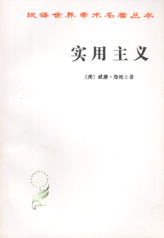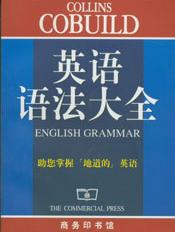牛津实用英语语法-第23章
按键盘上方向键 ← 或 → 可快速上下翻页,按键盘上的 Enter 键可回到本书目录页,按键盘上方向键 ↑ 可回到本页顶部!
————未阅读完?加入书签已便下次继续阅读!
refer to
rely on
remind sb of
resort to
succeed in
suspect sb of
think of/about
wait for
warn sb of/about
wish for
例句如:
Do you believe in ghosts?
你相信有鬼吗?
They were charged with receiving stolen goods.
他们被指控收受赃物。
you haven′t plied with the regulations.
你没有遵守条例规定。
For a week she lived on bananas and milk.
她靠吃香蕉喝牛奶过了一星期。
It never occurred to me to insure the house.
我从来也没想到过去给房子投保。
They persisted in defying the law.
他们多次犯法。
When arguments failed he resorted to threats.
他争辩不过别人的时候,就进行威胁。
注意:feel like+名词/代词意指“觉得想吃(喝)某东西或做某事”:
De you feel like a drink/a meal/a rest?
你想喝点什么/吃顿饭/休息一下吗?
feel like+动名词意指“觉得想做某事”:
I don′t feel like walking there.
我不想步行到那里去。
(关于like在比较中的用法参见第21节G-I。)
被动态动词当然可以接by+施动者,但它也可以接其他介词:
The referee was booed by the crowd.
裁判员遭到了观众的起哄。
The referee was booed for his decision/for awarding a penalty.
裁判员由于所作的裁决/所做出的犯规处罚而遭到起哄。
?
'Amber demo'
98 介词后的动名词
?
A 前面第89节中已经提到过,紧接在介词后的动词必须用动名词形式:
He left without paying his bill.
他没有付账就走了。
I apologize for not writing before.
我此前未能写信,谨表歉意。
She insisted on paying for herself.
她坚持要付她自己的那一份钱。
Before signing the contract,read the small print.
在签署合约以前,请详读小号字印出的内容。
(另参见第259节。)
还请注意某些名词+介词+动名词结构:
There′s no point in taking your car if you can′t park.
如果那里不能停放车子的话,你开车去就没多大意思了。
What′s the point of taking your car if you can′t park?
如果无处停放车子,你开车去还有什么意思呢?
Is there any chance/likelihood of his changing his mind?
他有可能改变主意吗?
Have you any objection to changing your working hours?
你反不反对改变你的工作时间?
I am in favour of giving everyone a day off.
我赞同给大家放一天假。
B 介词后面必须带动词的动名词形式,这一规则的唯一例外是except和but(介词)。在它们后面带动词原形:
I could do nothing except agree.
我除了同意,没有别的办法。
He did nothing but plain.
他只是抱怨,什么也不做。
但是如果but用做连词,即如果它引导从句,它的后面就可直接跟完整的不定式或动名词:
Being idle sometimes is agreeable,but being idle all the time might bee monotonous.
有时清闲无事是令人惬意的,但总是闲呆着就可能变得单调乏味了。
To be idle sometimes is agreeable,but to be idle all the time…(译文同上。)
?
'Amber demo'
99 介词/副词
?
许多词既可作介词又可作副词:
He got off the bus at the corner.(介词)
他在拐角处下了公共汽车。
He get off at the corner.(副词)
他在拐角处下车。
这些既可作介词又可作副词的词中最重要的有above,about,
across,along,before,behind,below,besides,by,down,in,near,off,on,over,past,round,since,through,under,up:
They were here before six.(介词)
他们6点之前在这里。
He has done this sort of work before.(副词)
他以前干过这种工作。
Peter is behind us.(介词)
彼得在我们的后面。
He′s a long way behind.(副词)
他远远地落在后面。
She climbed over the wall.(介词)
她爬过墙头。
You′ll have to climb over too.(副词)
你也得爬过去。
When the meeting was over the delegates went home.(副词)
会议结束后代表们各自回家了。(这里over=finished结束)
The shop is just round the corner.(介词)
商店拐过街口就是。
e round(to my house)any evening.(副词)
晚上有空来我家串门。
He ran up the stairs.(介词)
他跑上楼梯。
He went up in the lift.(副词)
他乘电梯上去了。
这些词中许多可以用来构成短语动词(参见第三十八章):
The plane took off.
飞机起飞了。(离开了地面)
He came round.
他恢复知觉了。(恢复了意识)
?
'Amber demo'
第十章?动词概说?
?
'Amber demo'
100 动词的分类
?
A 英语动词分两大类:
1 助动词:
be have do
can could may might must ought shall should will would need dare used
2 所有其他动词都可称做普通动词,如:
work sing pray
B be,have,do,need和dare与普通动词一样,有不定式和分词形式,但是can,could,may,might,must,ought,shall,should,will 和would既没有不定式形式也没有分词形式,所以只有几种非常有限的形式。
在研究助动词之前,先对普通动词的形式作简要的研究可能是有益的,因为普通动词多半加助动词以作时态变化。
?
'Amber demo'
普通动词?
?
'Amber demo'
101 主动态动词的主要变化
?
主动态动词的主要变化请参见下表中的例子:
==================================
ABC Amber CHM Converter v6。22
Trial version
==================================
规则动词的一般过去式和过去分词的构成都是在原形后加d或ed,有时原形的末尾辅音字母必须双写,如slip,slipped。(参见第355节拼写规则。)关于不规则动词,参见第364节。现在分词和动名词的变化总是规则的,其构成是在原形后加ing。在原形后加ing时,关于末尾的辅音字母的双写规则,这里也同样适用。(参见第355节拼写规则。)
?
'Amber demo'
102 主动语态形式一览表
?
A 形式
现在一般时式 he works(参见第172节。)
进行式 he is working(参见第164节。)
完成式 he has worked(参见第182节。)
完成进行式 he has been working(参见第190节。)
过去一般式 he worked(参见第175节。)
进行式 he was working(参见第178节。)
完成式 he had worked(参见第 194节。)
完成进行式 he had been working(参见第197节。)
将来一般式 he will work(参见第201节。)
进行式 he will be working(参见第211节。)
完成式 he will have worked(参见第216节。)
完成进行式 he will have been working(参见第216节。)
现在 条件语气 he would work(参见第219节。)
条件进行式 he would be working(参见第219节。)
完成 条件语气 he would have worked(参见第220节。)
条件进行式 he would have been working
B 肯定式的缩略式
助动词be,have,will,would的缩略形式如下:
am牋牋牋牋牋牋牋牋 ′m
is牋牋牋牋牋牋牋牋牋 ′s
are牋牋牋牋牋牋牋牋 ′re
have牋牋牋牋牋牋牋 ′ve
has牋牋牋牋牋牋牋?′s
had牋牋牋牋牋牋牋?′d
will牋牋牋牋牋牋牋?′ll
would牋牋牋牋牋?′d
注意:′s可以表示is或has;′d可以表示had或would:He′s going.相当于:
He is going.
他要走了。
He′s gone.相当于:
He has gone.
他已走了。
He′d paid.相当于:
He had paid.
他已付过了。
He′d like a drink.相当于:
He would like a drink.
他想要杯喝的。
这些缩略形式用于代词here,there,某些疑问词(参见第104节)和短的名词之后:
Here′s your pen.
你的钢笔在这儿。
The twins′ve arrived.
双胞胎已经到了。
The car′d broken down.
车坏了。
肯定式的缩略式不用于句末:
You aren′t in a hurry but I am.
你不着急,我可着急。(此处不能用I′m。)
shall,should,was和were没有书面的缩略形式,但在口语中常读为/Ml/,/M+d/,/w+z/和/w+(r)/。
C 重音
通常助动词被用来构成时态时不重读,而主要的动词应重读。
?
'Amber demo'
103 各种时态的否定形式
?
A 一般现在时的否定式:第三人称单数为does not/doesn′t+动词原形;所有其他人称为do not/don′t+动词原形。一般过去时的否定式:所有人称都是did not/didn′t+动词原形。
口语中较常用的缩略形式举例如下:
He does not/doesn′t answer letters.
他从不给人回信。
They do not/don′t live here.
他们不住在这儿。
I did not/didn′t phone her.
我没打电话给她。
She did not/didn′t wait for me.
她没等我。
其余的时态的否定式都用在助动词后加not的方法构成。口语中可用缩略形式:He has not/hasn′t finished.
他还没有完成。
He would not/wouldn′t e.
他不会来。
B 否定式的缩略形式
助动词be,have,will,would,shall,should,do的缩略形式如下:
am not牋牋牋牋 ′m not
is not牋牋牋牋牋 isn′t/′s not
are not牋牋牋牋 aren′t/′re not
例句如:
I′m not going and Tom isn′t/Tom′s not going.
我不去,汤姆也不去。
We aren′t going./we′re not going.
我们不去。
have not和has not的缩略形式是haven′t和hasn′t,但在完成时态中′ve not和′s not也是可以的:
We haven′t seen him./We′ve not seen him.
我们没见到过他。
He hasn′t/He′s not e yet.
他还没来。
will not的缩略形式是won′t,但′ll not也是可以的。 shall not的缩略形式是shan′t:
I won′t go/I′ll not go till I hear and I shan′t hear till tomorrow.
没有听到音信以前我不去,而我要到明天才能听到音信。
其他动词的缩略形式是按常规加上n′t。
否定式的缩略式可置于句末:
I saw it but he didn′t.
我看见它了,可他没看见。
C 英语中,一个否定句只能在句中有一个否定的表达方式,而双
重否定就会使句子具有肯定的含义:Nobody did nothing意指人人都干了点事。
因此,never,no(形容词),none,nobody,no one,nothing,hard- ly,hardly ever等词都和肯定动词连用。可以说:
He didn′t eat anything./He ate nothing.
他没吃东西。
He doesn′t ever plain./He never plains.
他从来不抱怨。
We haven′t seen anyone./We have seen no one.
我们谁也没看见。
They didn′t speak much./They hardly spoke at all./They hardly ever spoke.
他们没有说什么。
?
'Amber demo'
104 表示疑问和请求的疑问式
?
A 关于一般现在时的疑问式,第三人称用does he/she/it+动词原形,其他各人称用do I/you/we/they+动词原形。
关于一般过去时的疑问式,各人称都用did+主语+动词原形:
Does Peter enjoy parties?
彼得喜欢参加聚会吗?
Did he enjoy Ann′s party?
他在安的聚会上玩得开心吗?
至于其他各时态,则通过把主语放在助动词之后的方法来构成疑问式:
Have you finished?
你完成了吗?
Are you ing?
你们来吗?
B 用于疑问句中的助动词的缩略形式
1 am,is,are,have,had,will和wouldhow,what,who,where,why这一类词后的缩略形式正如第102节B节中所示:
How will/How′ll he get there?
他将怎样到那里去?
What has/What′





